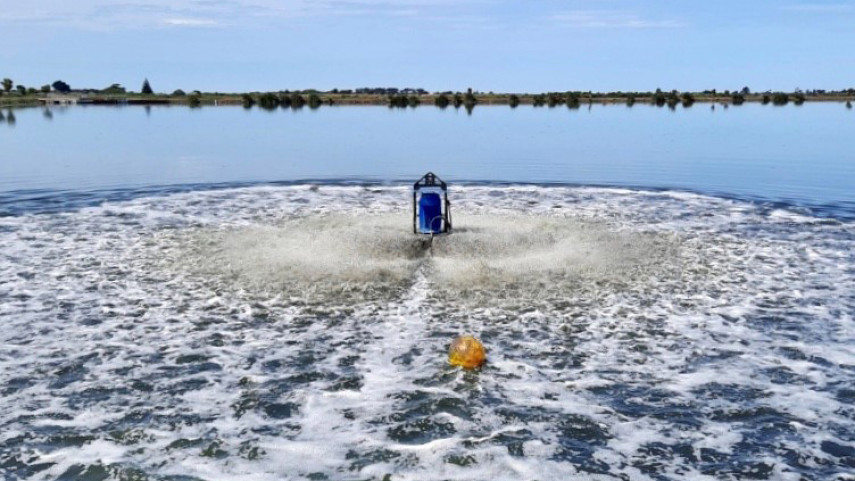
Aeration components arriving at Christchurch Wastewater Treatment Plant

Share this story
Aeration components from around the world are arriving at the Christchurch Wastewater Treatment Plant, as the Christchurch City Council starts implementing its medium-term plan to minimise odours from the fire-damaged plant.
Six aerators are being flown in from the United States and two more have been sourced from around the country, while the motors are coming from Brazil and specialised submersible electrical cabling from Australia.
Christchurch City Council Head of Three Waters, Helen Beaumont, says while work was already under way to convert two of the four clarifier tanks into aeration basins, the aerators are a vital component of the interim solution.
“Installing four aerators in each of the two tanks will pump more oxygen into the wastewater, which should help decrease the unpleasant odours and improve the wastewater quality before it enters the oxidation ponds,” Ms Beaumont says.
“We aim to have the aerators functional by the end of March.
“The November 1 fire destroyed the two trickling filters at the plant, and these were very important to the wastewater treatment process.
“We’re very aware of the smells that residents have been subjected to since the fire. We expect the new system, which should be in place by the end of next month, will help improve this situation, as it’s likely to be years before we’re able to fully rebuild or replace the trickling filters.”
To convert the clarifiers into aeration basins, a crane will lift four 75kw mixer aerators into each clarifier. An additional 600kw power supply will enable the aerators to continuously operate.
New submersible pumps will push the wastewater from the new aeration basins through to the remaining two clarifier tanks.
After the clarifier conversion is completed, detailed design will begin on a way to provide additional aeration into the oxidation ponds.
In the meantime, Ms Beaumont says poly aluminium chloride will continue to be added to the wastewater at two key points in the process.
This ‘poly-dosing’ settles more of the suspended solids and reduces the organic loading of the supernatant wastewater - the clear liquid from the top - that now bypasses the trickling filters and goes on to the secondary contact tanks.
The team is also adding hydrogen peroxide – a compound that naturally breaks down into water and oxygen – to the wastewater before it’s discharged into the oxidation ponds.
This week Council staff also submitted its incident report to WorkSafe. The report will be made public once all insurance claims are settled.
For more information and updates on the recovery from the wastewater treatment plant fire, visit ccc.govt.nz/wastewaterfire.
